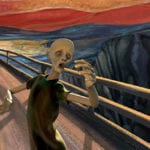 Weird Stuff
Weird Stuff  Weird Stuff
Weird Stuff  Mysteries
Mysteries 10 Tragic Disappearances and Deaths in Joshua Tree National Park
 History
History 10 Ways Childhood Really Sucked in the Old West
 Music
Music 10 Name Origins of Famous Bands from the 1990s
 Religion
Religion 10 Biggest Turnarounds by the Catholic Church
 Weird Stuff
Weird Stuff 10 Unbelievable Times Laws Had Unintended Consequences
 Humans
Humans Ten Historic Women Who Deserve Way More Credit Than They Got
 Movies and TV
Movies and TV 10 Films That Spawned Major Lawsuits
 History
History Ten Times Towns Were Wiped Off the Face of the Earth
 Creepy
Creepy 10 of the Most Disturbingly Haunted Public Houses in the UK
 Weird Stuff
Weird Stuff 10 Niche Subcultures That Are More Popular Than You Might Think
 Mysteries
Mysteries 10 Tragic Disappearances and Deaths in Joshua Tree National Park
 History
History 10 Ways Childhood Really Sucked in the Old West
Who's Behind Listverse?

Jamie Frater
Head Editor
Jamie founded Listverse due to an insatiable desire to share fascinating, obscure, and bizarre facts. He has been a guest speaker on numerous national radio and television stations and is a five time published author.
More About Us Music
Music 10 Name Origins of Famous Bands from the 1990s
 Religion
Religion 10 Biggest Turnarounds by the Catholic Church
 Weird Stuff
Weird Stuff 10 Unbelievable Times Laws Had Unintended Consequences
 Humans
Humans Ten Historic Women Who Deserve Way More Credit Than They Got
 Movies and TV
Movies and TV 10 Films That Spawned Major Lawsuits
 History
History Ten Times Towns Were Wiped Off the Face of the Earth
 Creepy
Creepy 10 of the Most Disturbingly Haunted Public Houses in the UK
8 Crazy Experiments Passed Off As Art
Over the centuries our definition of ‘art’ has changed a lot. Three hundred years ago, it meant paintings of trees. A hundred years ago, it meant paintings of squares. Today it means ‘insanity’. Yeah, since the advent of pop art and postmodernism, art has apparently gone from being an outlet for tortured poets, to something practiced exclusively by mad scientists. How else do you explain deranged social experiments like…?
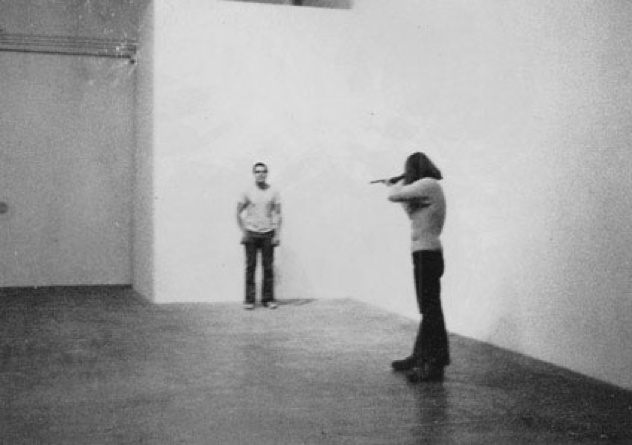
You could write an entire article titled ’10 Reasons Chris Burden was Crazier than a Shithouse Rat’ and still have plenty of examples to spare. For one, he once asked a friend to shoot him with a rifle (which the ‘friend’ then did); while another bout of insanity saw him nail himself to his car—a feat so uniquely crazy, David Bowie wrote a song about it.
But the absolute most-lunatic stunt he ever pulled was in 1975. Interested to see at what point an audience might intervene, he placed himself under a glass sheet next to a clock and lay there completely immobile. The plan was to not move until a visitor to the gallery got worried and tried to help him, but here’s the kicker: they didn’t. Even after Burden had crapped his pants and gone nearly two days without water, people just nodded politely and left him to it. The only reason his desiccated corpse isn’t still lying there now is because a gallery attendant got nervous and left a glass of water next to him: at which point Burden finally cracked and ended the show.
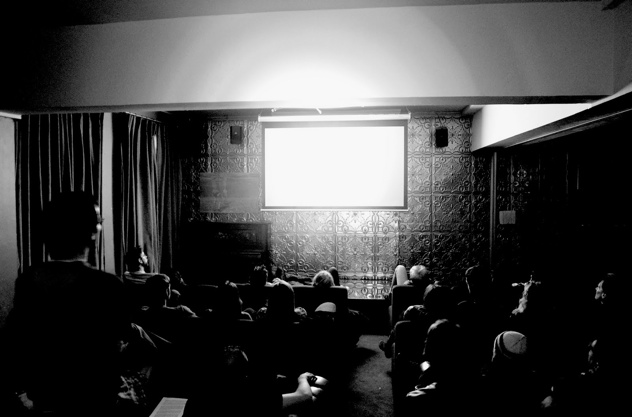
Most of us who hear the words ‘video art’ instinctively turn and run as fast as we can from whoever said them, but Tony Conrad’s work is a little different. While it’s not exactly The Godfather, or even Godfather Part III, it aims to do something no mainstream blockbuster ever would: give you acid-trip hallucinations.
You read that right: the entire purpose of his 1966 film ‘The Flicker’ was to send the viewer into a state of advanced schizophrenia (for the love of God, DO NOT click that link if you suffer from epilepsy). Featuring nothing more than flickering lights projected in a darkened room, the experience was said to be such a ‘trip’ that it acted as visual LSD, giving rise to all sorts of crazy visions. This being the 60s, people loved it—leading to a whole heck-load of imitators: including Paul Shartis’ ‘TOUCHING’—which went one sense further by screwing with your hearing as well.

If you need final proof that our species is psychologically doomed, look no further than Marina Abramovic’s Rhythm 0. In 1974, Abramovic staged a performance piece where she sat immobile in a chair, next to a sign informing her audience they could do whatever they wanted to her. Just to make it clear she meant ‘anything’ there was a table nearby covered in stuff like whips, scalpels, scissors and a loaded gun.
Now comes the terrifying part: her audience totally got into it. And I mean ‘totally’: over the course of six hours they tore her clothes off, jabbed rose thorns in her stomach, cut her and put the loaded gun to her head—a litany of sadism that would be extreme in an Eli Roth movie, let alone an art gallery. Eventually, the performance ended when Abramovic suddenly got to her feet—at which point all her tormentors did exactly what challenged bullies always do and ran away like a bunch of frightened schoolgirls.

Given what we know about the internet, it’s safe to assume the last thing any of us would want to do is plug ourselves into it—unless we wanted to spend the rest of our lives as the abused plaything of remorseless teenagers on 4Chan. Yet, in 1995, performance artist Stelarc did just that. Inserting electrodes into his muscles, Stelarc wired himself up to a network that allowed members of the public in Amsterdam, Paris or Helsinki to literally manipulate him from afar. By touching a button, they could cause his limbs to spasm on command or even move independently of the artist’s will. Surprisingly, participants didn’t use this chance to make him repeatedly punch himself in the balls or dance Gangnam style around the auditorium for twelve hours straight and Stelarc survived. In fact, he enjoyed it enough to do the whole thing a second time.
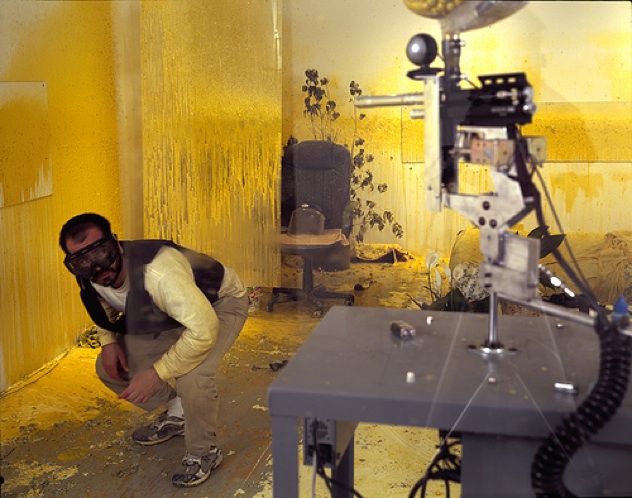
Of course, the internet of 1995 was a very different place to today’s monstrosity—as artist Wafaa Bilal found out the hard way. In 2007, he installed himself in an empty room at an art gallery for a month, eating and drinking only what was donated to him by visitors. This alone could have resulted in some hijinks, but Bilal went one step further: included in the room was a paintball gun which could be accessed and fired through the internet.
It’s not hard to guess what happened next: after the story blew up on Digg, roughly 60,000 people flocked to the site and unleashed fluorescent yellow death on the artist. For the last ten days, Bilal was more-or-less under constant fire: a condition that only intensified when some hackers programmed the gun to fire automatically. By the end, he’d been shot at uncountable times and hit around 40,000—roughly once a minute for 30 whole days.
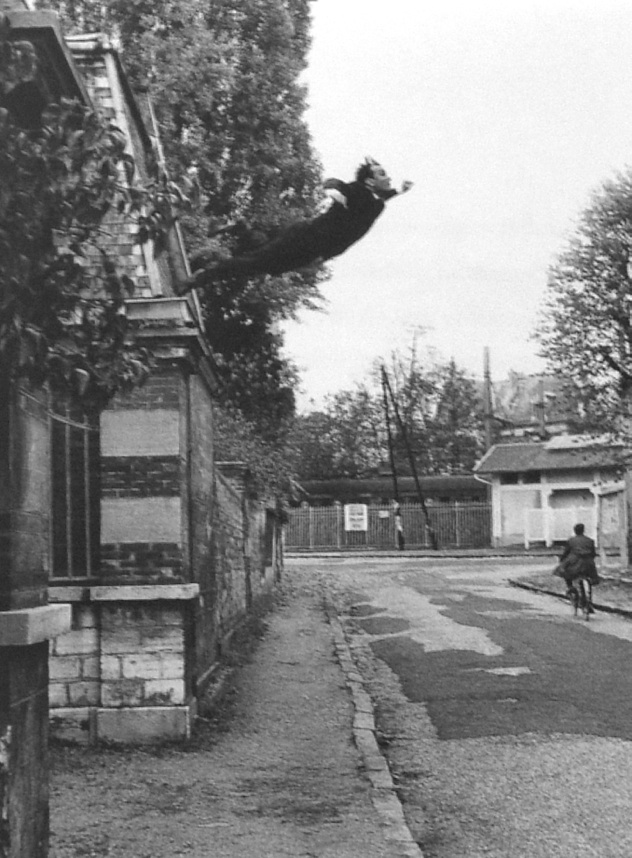
There are a few experiments you should ideally get out the way while still a kid: and one of them is discovering if you alone, in the whole of human history, have the power of flight. But Yves Klein took one look at common sense and thought ‘to hell with that’. In 1960, the conceptual artist took himself up to his second floor window and leapt out headfirst—a sentence that makes even less sense when you learn it was meant to be a critique of NASA’s exploration of the moon. At the time, Yves was recorded as saying he intended to show he could undertake unaided lunar travel: in other words, that he would miss the ground and go careering off into the sky. Was it a success? You can probably guess the answer.

Last year, a Ukrainian artist ran one of the most-bizarre social experiments ever recorded. At the National Art Museum in Kiev, five young girls took turns lying on a bed with their eyes closed while patrons waited in line to kiss them. If that sounds weird enough, we haven’t even got to the kicker yet: if any of the women opened their eyes while being kissed, they were contractually obliged to marry the Ukrainian stud doing the kissing.
Imagine that for a second: not only were there enough people in Ukraine willing to tongue-wrestle an unconscious woman to make this project viable, there were enough women willing to take the risk of opening their eyes to see Ukrainian Danny DeVito hovering over them with a glint in his eyes. In the end though, the project culminated with an unexpected twist when one of the sleeping beauties opened her eyes to a female kisser.
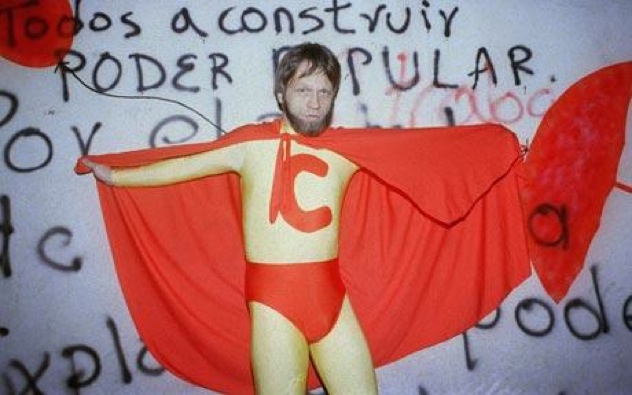
All these entries deal in some way with life and art merging until you’re no longer sure which is which. But none of them achieve it to such a degree as the life of Antanas Mockus.
First off, Mockus is foremost known as a politician. However, he has often self-identified as an artist, and his antics suggest he’s not just using the appellation to pick up girls. When faced with a rowdy lecture hall full of students in 1993, he famously pulled down his pants and mooned them to get attention—later saying getting his butt out was “a part of the resources which an artist can use.” But no amount of pantless action can compare to the time he ran in Bogota’s mayoral race—and won. Twice.
Read that again: for roughly six years, Colombia’s biggest city was being run by a guy who devoted his life to ‘artistic pranks’. On his first campaign, Mockus dressed as Superman and ran around ‘fighting crime’. Once elected, he hired 420 street mimes to direct traffic; appeared on TV to explain policy while naked and showering; distributed ‘thumbs up’ and ‘thumbs down’ cards to 350,000 people so he’d know if the populace was happy and created a federation of elite taxi drivers called ‘the Knights of the Zebra’. And people loved it: behind each of his great big gestures was a reason, a lesson—a way to improve the city and people’s lives. During his tenure his stunts kept getting bigger and bigger, while all the time crime fell (LINK 11), traffic fatalities halved and tax takings increased. Ultimately, this mad artist used his medium to make life objectively better for hundreds of thousands of people. So yeah, despite what the rest of this list might suggest—making ridiculous art apparently isn’t always such a ridiculous idea.
